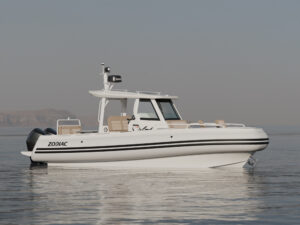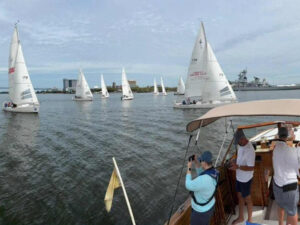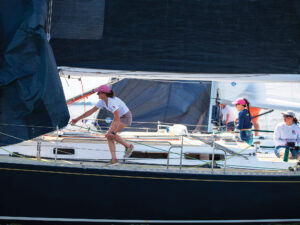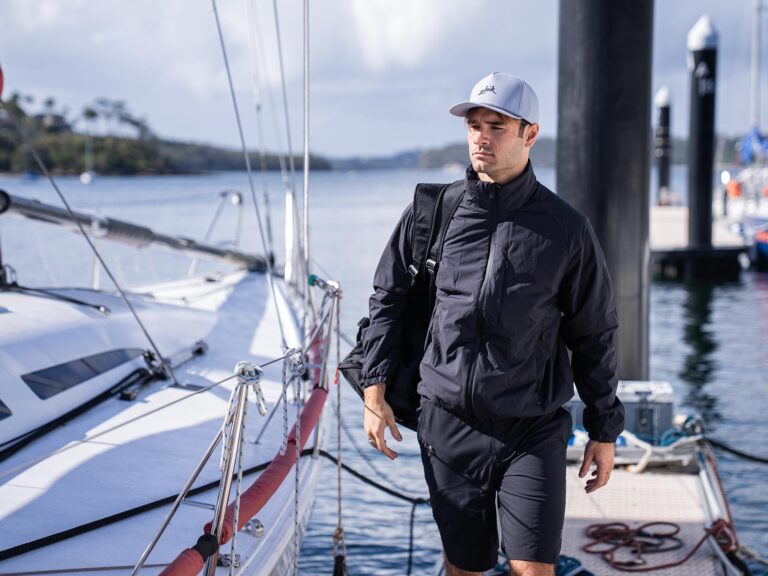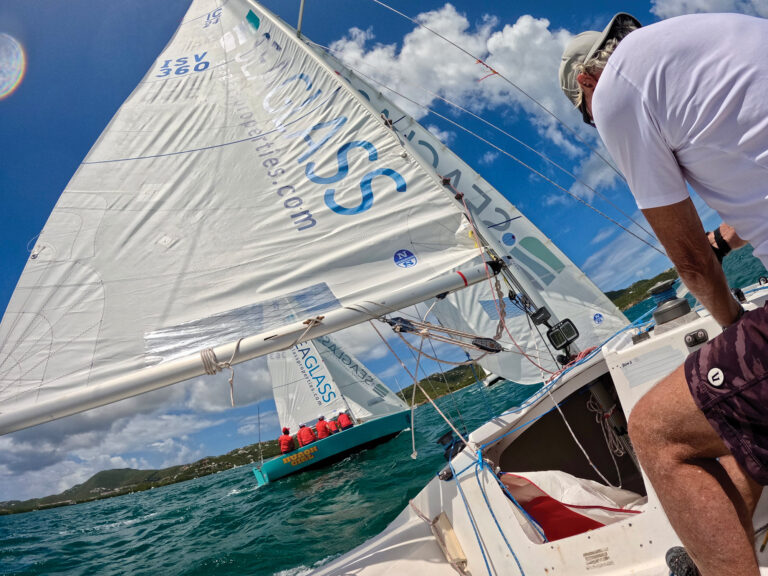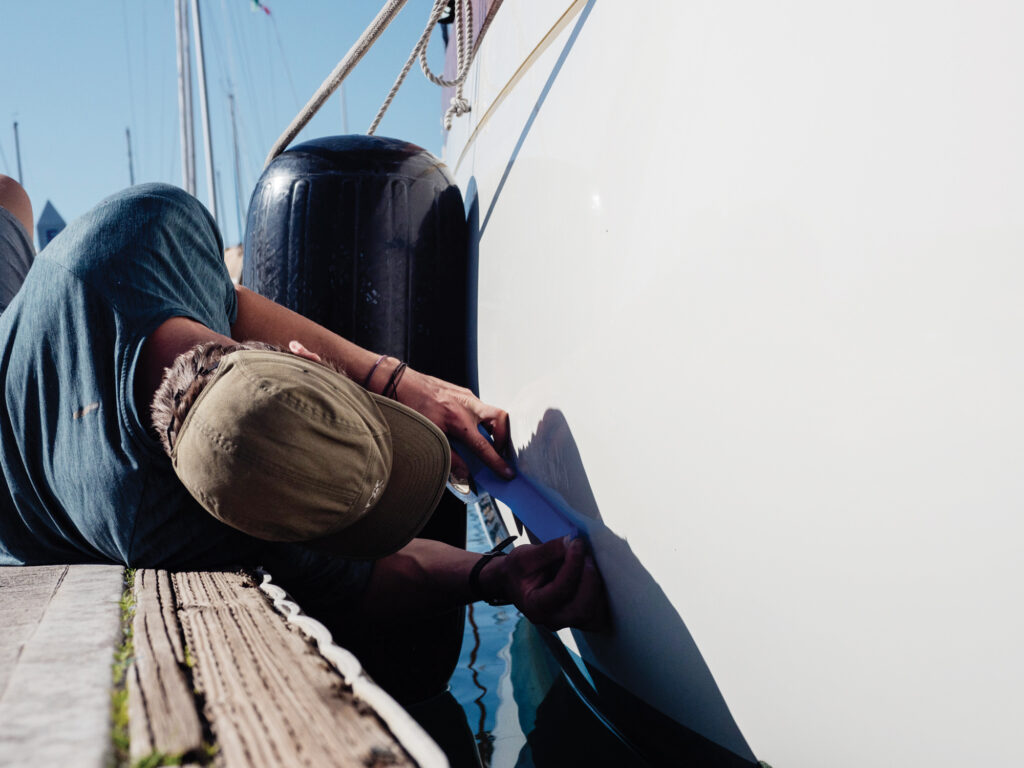
Repairing Awlgrip paint can feel intimidating, but with a little patience and the right technique, it’s possible to get a result that protects your boat and looks good from a boat length away. This step-by-step method is based on a completed repair our Cheoy Lee 41, Avocet, that’s been out in the weather for a year, imperfections and all.
Our repair began, as they all should, with a close inspection. Scratches had cut clean through the Awlgrip topcoat and primer, but stopped at the gelcoat. That was good news because no filling or fairing was needed. A careful sanding would suffice to prepare the surface for new paint.
Preparation is the make-or-break stage. We cleaned the damaged area thoroughly to remove salt, grime and oily residue that could sabotage adhesion. We laid painter’s tape about an inch beyond the damage, giving enough room to feather the edges without accidentally sanding into sound paint.
Sanding started with 220-grit paper to knock down the rough spots, then moved to 320-grit to smooth the transition until the repair area blended into the surrounding surface. The goal was to make the edge disappear to the touch before ever opening a paint can.
Ideally, a compatible Awlgrip primer would have gone down next, but in this case, none was on hand. The job went straight to topcoat—because in the real world, repairs sometimes must happen with what’s available. Using the roll-and-tip method, we applied a thin, even coat of topcoat with a roller, then tipped it immediately with a clean, high-quality brush to pop any bubbles and level the finish. Once the first coat was tacky, we repeated the process until three coats had built up enough coverage for durability.
Fresh paint is fragile, so we shielded the repair area from sun, wind and airborne grit with a simple protective cover. Even a draped cloth or improvised shelter can make the difference between a clean cure and a dusty mess.
A year later, the repair is still intact. There’s no peeling, no major fading. Up close, a slight sag in the middle reveals where a little too much paint was applied in one pass, but the topsides look far better than with those deep, visible scratches. From the dock or under sail, the flaw is invisible.
Looking back, there are lessons for anyone tackling Awlgrip repairs. Airbrushing or using a small spray gun can make it easier to feather edges and blend new paint with the old. And while Awlgrip’s hardness is great for longevity, it’s less forgiving for small touchups. Alternatives like Alexseal, though designed for spraying, can be wet-sanded and buffed to create near-invisible repairs.
The takeaway? You don’t have to chase perfection to get worthwhile results. With solid prep, careful application and a little protection during curing, an Awlgrip repair can keep a boat looking cared-for and ready for the next voyage.
Follow SV Avocet’s Chris and Marissa Neely at svavocet.com.

